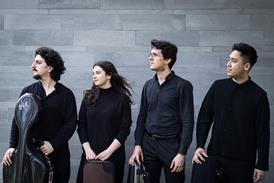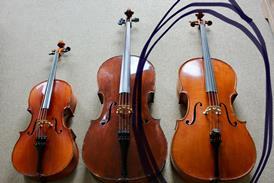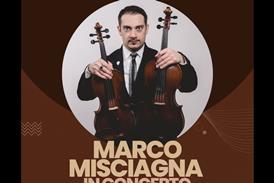An 18th-century violin concerto, possibly by Antonio Vivaldi,
has been discovered in the archives of the Dresden State
Library. The technically demanding 17-minute work has been
attributed to the Italian composer by Baroque expert Michael
Talbot, and may receive its modern premiere this September.
The work in A major was discovered in mid-June by Icelandic scholar
Jóhannes Ágústsson, who noted markings on the orchestral parts such
as ‘Allegro non molto’ and ‘Qui si ferma a piacimento’ as being
peculiar to Vivaldi. Talbot has suggested that the phrase structure
and stylistic flourishes indicate a composition date of between
1729 and 1733.
Adrian Chandler, director of Baroque ensemble La Serenissima, is
convinced the concerto is by Vivaldi. ‘There are too many
compositional techniques that you only find in Vivaldi,’ he said.
‘Having said that, I’ve never seen Vivaldi this hard – there are
several top C sharps and I’m not talking third position, and
technically speaking it’s leagues ahead of anything else he’s
written.’
According to Chandler, the piece may have been written specifically
for Johann Georg Pisendel, then concertmaster of the Dresden court
orchestra, who had studied violin and composition with Vivaldi.
‘Vivaldi had a very intimate knowledge of what Pisendel was capable
of and I think it may have been written as a kind of perverse
concerto, just for him.’
The concerto has not been approved by the Vivaldi Institute in
Venice, as the members of its editorial committee remain divided as
to its authenticity. 'Because of the rules we operate, where each
individual members has in effect a veto, no RV number will be
assigned in the immediate future,' explained Talbot. 'I foresee
that in time the situation will be resolved more clearly, and my
own belief is that the concerto will come to be recognized as one
of Vivaldi's, with the slight proviso that some of the solo
material could have been reworked or replaced by the Dresden
musicians – something that happened a lot in the Dresden
repertoire.'
- News
- For Subscribers
- Student Hub
- Playing Hub
- Podcast
- Lutherie
- Magazine
- Magazine archive
- Whether you're a player, maker, teacher or enthusiast, you'll find ideas and inspiration from leading artists, teachers and luthiers in our archive which features every issue published since January 2010 - available exclusively to subscribers. View the archive.
- Jobs
- Shop
- Directory
- Contact us
- Subscribe
- Competitions
- Reviews
- Debate
- Artists
- Accessories


























No comments yet